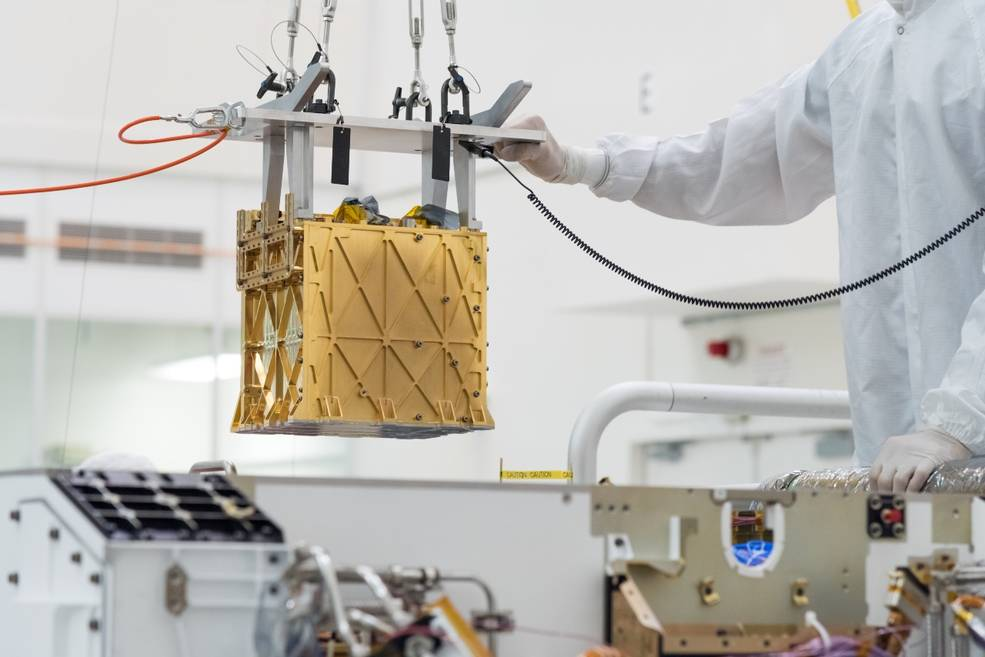Today, scientists revealed a device currently on the surface of Mars that generates a large amount of oxygen
Scientists revealed Wednesday that a lunchbox-sized device currently on the surface of Mars is already generating as much oxygen as a tree.
Oxygen will be important not only to provide astronauts with breathable air when they are off planet Earth, but also to help fuel rockets for their eventual return to Earth. In a new research paper published today in Science Advances , researchers from the Massachusetts Institute of Technology explain how the experience of this Mars-rovers on a NASA rover is evidence that it is possible to produce oxygen from the Martian atmosphere.
Today, scientists revealed a device currently on the surface of Mars that generates a large amount of oxygen
This experiment is also the first to successfully harvest and use Earth's resources on any planetary body, and this process will be important not only for Mars exploration but also for future lunar habitats.
Michael Hecht is a co-author on the new paper and the principal investigator for the project, called MOXIE. The researchers focused on oxygen harvesting because it would be one of the most difficult resources to bring from Earth and would have multiple roles in creating a sustainable habitat on Mars.
“I like to say that rockets breathe more than we do,” Hecht said. “Just in order to take off to orbit, the rocket will need more than 10 times the amount of fuel that a crew of 4-6 people will use in their one-and-a-half year stay on the surface, and therefore will need 10 times the amount of oxygen.”
MOXY first landed on Mars in February 2021 and since then has been run seven different times under different seasonal and atmospheric conditions to produce oxygen using compounds in the Martian atmosphere such as carbon dioxide. This air is passed through a HEPA filter to remove any dust, heated to 800°C and pressured so that it only disintegrates into oxygen and carbon dioxide ions. The oxygen ions are then isolated and recombined to form breathable and combustible O2.
So far, MOXIE has been able to produce six grams of oxygen per hour in each of its seven runs, which the researchers say is the equivalent of a small tree. And although the MOXIE device produces a small amount of CO2 and CO2 exhaust from this process, nothing would harm the Martian atmosphere, Hirscht says.
“There is already a trace of oxygen and carbon dioxide on the surface of Mars,” Hirscht said
While MOXIE is positive evidence that it is possible to produce oxygen on another planet, the system itself is not yet powerful enough to sustain a habitat on Mars. To do this, Hecht said researchers will need to scale up the MOXIE device
Scaling up the technology itself isn't too difficult, but operating the system autonomously on Mars for thousands of hours may be even more challenging, especially since the original MOXIE has so far only operated for less than 100 hours since it landed last year. .
Meanwhile, Hecht and his colleagues are eager to continue testing MOXIE on Mars and in the Mars Simulation Laboratory back on Earth to push the boundaries of technology. In particular, they are looking to increase production capacity during the Martian spring when atmospheric density and carbon dioxide levels are high. Currently, it is the beginning of winter on Mars.
https://www.stepvideograph.net/2022/09/01/%d9%83%d8%b4%d9%81-%d8%a7%d9%84%d8%b9%d9%84%d9%85%d8%a7%d8%a1/?fbclid=IwAR0Ym8dggDX9X0T9VS7sZ_O0CdkNU9y-lTxqpM0TezQLym6opet-8P91z5Y



